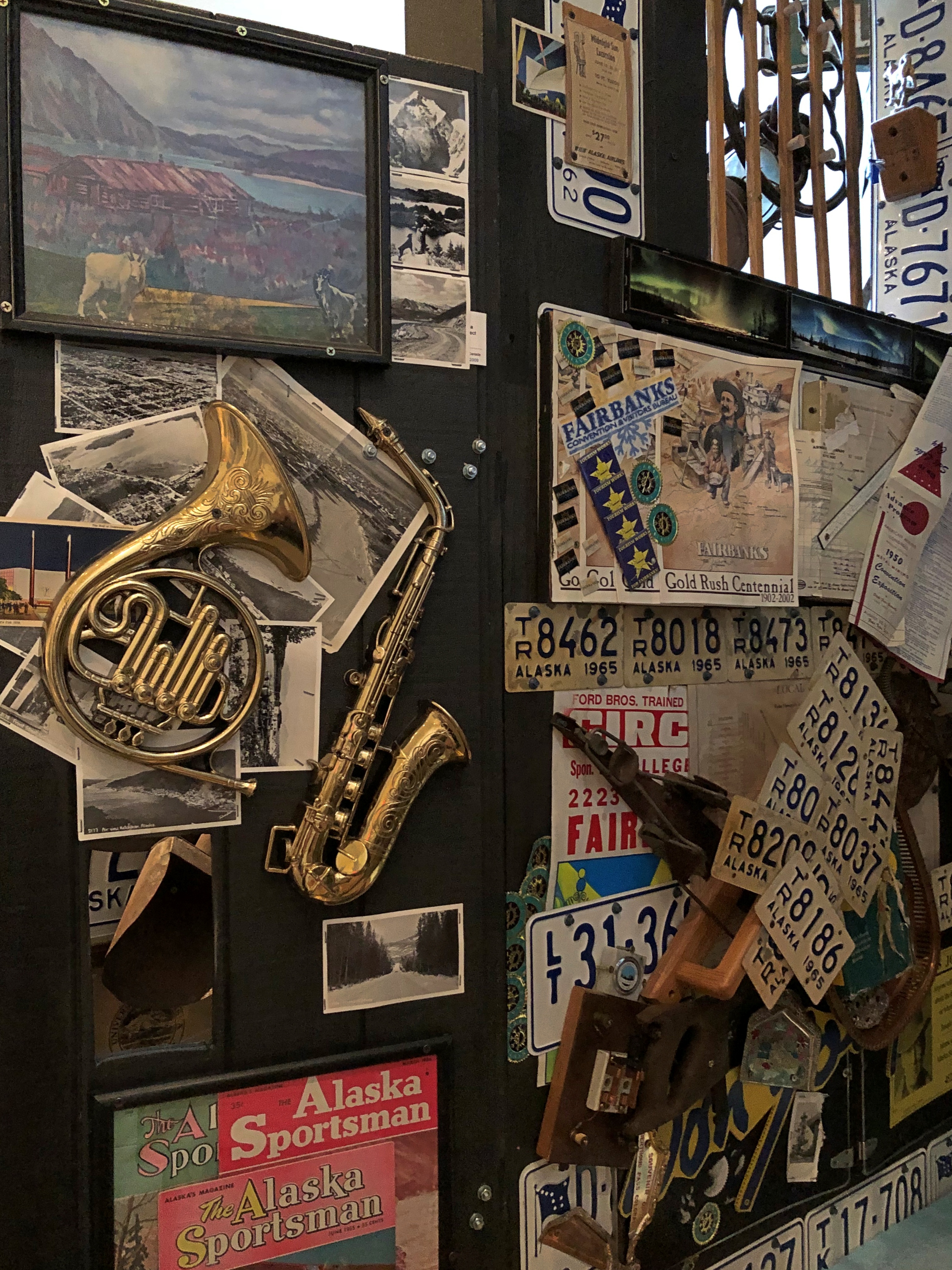The flight from Seattle to Fairbanks actually isn’t that long, only three hours or so. I expect getting to Anchorage is even shorter, something to keep in mind for the future.
I could see parts of Vancouver Island not long after takeoff, including the city of Victoria from on high. Only a few days earlier, I’d seen it from a vista in Olympic National Park, far away but distinct on the shore of the Salish Sea.
Soon, however, British Columbia and whatever I might have seen of southeast Alaska were obscured by clouds. Closer to Fairbanks, the clouds thinned, and in places I got to see just how undeveloped the interior of Alaska is. A structure here, one there, a place that looked like cultivated land (maybe giant cabbages), but not much else manmade.
I arrived in Fairbanks on July 26 to find partly cloudy skies and comfortable temps, in the low 70s. It was mid-afternoon, with a lot of light ahead, so I made my way to the Museum of the North, which is on the campus of the University of Alaska Fairbanks and thoughtfully open until 7 pm during the summer. Seemed like a good choice for the first place I went in Alaska. Not much else looks like it in Fairbanks.
“Joan Soranno and the GDM/HGA architectural team designed the building to convey a sense of Alaska,” says the museum web site. Hm.
A sign inside the building expands on that idea: “The design is a composition of four abstract forms. Angled, curved, tipped and cantilevered, these forms reflect the lines and shapes found in Alaska’s coastlines, mountains and glaciers.”
The exhibits cover a lot of ground. “The museum’s research collections — 2.5 million artifacts and specimens — represent millions of years of biological diversity and thousands of years of cultural traditions in the North,” the museum says.
The university began exhibiting artifacts as long ago as 1929, with various places for its displays, but the current building wasn’t completed until 2006.
“The collections are organized into 10 disciplines: archaeology, birds, documentary film, earth sciences, ethnology/history, fine arts, fishes/marine invertebrates, insects, mammals, and plants,” the museum says.
Let’s start with one of those mammals. He greets you at the entrance to the first-floor gallery.
Followed by plenty of other sizeable creatures of a stuffed nature.
Along with prehistoric relics.

The first-floor Gallery of Alaska is organized geographically, with sections for the Southeast, South-Central, Interior, Western Arctic Coast and Southeast. The exhibits include much more than large stuffed animals.
The Native presence is well covered.
If genuine, there’s a 19-oz. gold nugget in there among others nearly that large. I assume the display is wired against theft.
On the second floor is the Rose Berry Alaska Art Gallery, which includes an eclectic mix. The only thing all the works have in common is that they were created by Alaskan artists.
“Arctic Winter” by Theodore R. Lambert, 1936.

“Iron Eskimo” by T. Mike Croskrey, 2002.

“Great Alaska Outhouse Experience” by Craig N. Buchanan, 2005

That one has an interactive element. You can enter the structure and sit down. You’ll then be up close to the walls and something of a ceiling.


All in all, the museum turned out to be a pretty good way to start my visit to Alaska.






